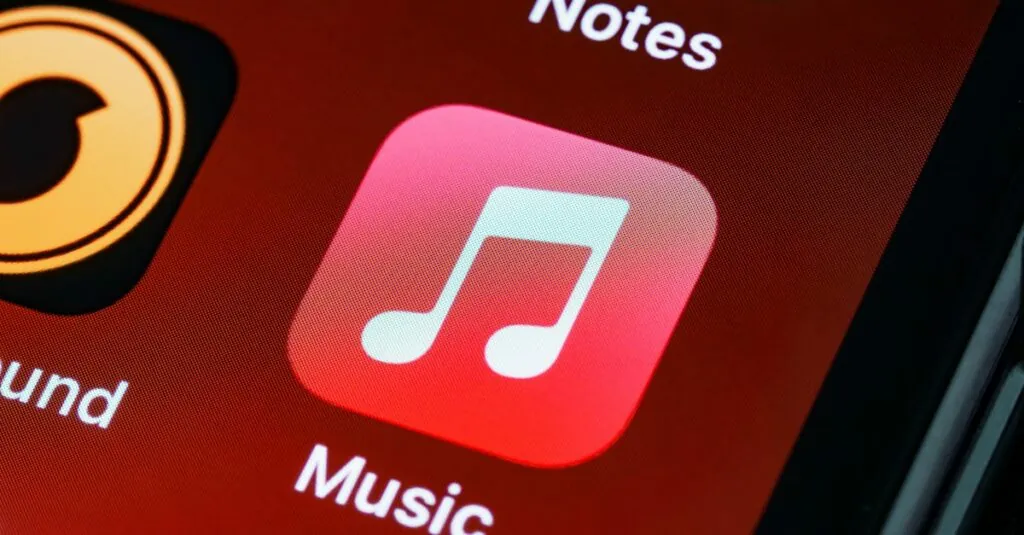Table of Contents
ToggleDisabling an iPhone without iTunes might sound like trying to teach a cat to fetch—impossible, right? Well, think again! Whether it’s a stubborn device acting up or simply a desire to break free from the clutches of iTunes, there are ways to regain control.
Understanding iPhone Disabling
Disabling an iPhone can seem daunting, yet various scenarios may necessitate this action. Users often benefit from understanding why disabling can be essential and when it might become necessary.
Reasons for Disabling an iPhone
Disabling an iPhone becomes important for several reasons. Security concerns arise when a device gets lost or stolen, prompting users to disable it to prevent unauthorized access. Another reason involves malfunctioning software, where restoring the device to its factory settings can enhance performance. Users also disable their iPhones to fix persistent issues, like crashes or unresponsive screens. Additionally, preparing an iPhone for resale or transfer to another user often requires disabling previous accounts and settings for privacy reasons.
When You Might Need to Disable
Certain situations clearly indicate the need to disable an iPhone. Encountering frequent errors or issues with apps might signal a necessity to reset the device. Losing a device can prompt immediate disabling to protect personal data. Upgrading to a new device also requires disabling the old iPhone to ensure a smooth transition. Situations like forgetting a passcode may necessitate disabling the phone to regain access. Each instance represents a valid reason for users to act promptly and disable their iPhones.
Methods to Disable iPhone Without iTunes
Multiple methods exist to disable an iPhone without using iTunes, providing effective solutions for various situations.
Using iCloud Find My iPhone
Find My iPhone offers a straightforward way to disable a device. Users can log into iCloud with their Apple ID, access Find My iPhone, and select the lost device. From there, these options include putting the device in Lost Mode or erasing it remotely. Lost Mode locks the iPhone, displaying a custom message on the screen, which may assist in its recovery. Alternatively, the erase option removes all data, preventing unauthorized access. Users must ensure they’ve previously enabled Find My iPhone for this method to work effectively.
Using Third-Party Tools
Several third-party tools provide alternatives to disable an iPhone without iTunes. Software like Tenorshare ReiBoot or Dr.Fone can assist users in entering recovery mode or performing factory resets. Users download the chosen tool, connect their iPhone via USB, and follow on-screen instructions to manage the device. Some tools offer additional features, such as repairing iOS issues or bypassing locks. Researching and selecting reliable software ensures effective results, maintaining device security throughout the process.
Step-by-Step Guides
This section provides effective methods to disable an iPhone without iTunes.
Disabling via iCloud
Using iCloud’s Find My iPhone feature simplifies the process of disabling the device. Users need to log into their iCloud account on a computer or another iOS device. After logging in, they can select the iPhone from the list of devices. Activating Lost Mode locks the device and shows a custom message on the screen. Choosing the erase option deletes all data, preventing unauthorized access. Remaining aware of their Apple ID and password is essential for this method to work smoothly.
Alternative Third-Party Solutions
Exploring third-party tools offers additional options for disabling an iPhone. Software such as Tenorshare ReiBoot or Dr.Fone supports entering recovery mode or performing a factory reset. To begin, users must download the chosen software and connect the iPhone to a computer via USB. Each program provides on-screen instructions to guide users through the process. Some applications even include extra features for repairing iOS issues or bypassing locks. Selecting a reputable tool ensures both effectiveness and device security during the procedure.
Troubleshooting Common Issues
Understanding potential issues can enhance the success of disabling an iPhone without iTunes. Users frequently encounter errors during the process. For instance, network connectivity problems might prevent iCloud from working properly. Clearing cache and checking Wi-Fi connections often resolve these issues. Also, outdated iOS versions can interfere with functionality. Regular software updates keep devices running smoothly.
When issues arise, they can often be solved with simple fixes. Restarting the device sometimes clears temporary glitches. Users can also try signing out and back into their Apple ID to reset connections. Checking account settings ensures the right credentials are used.
Potential Errors and Fixes
Errors can disrupt the disabling process, but specific solutions exist. A device may remain unresponsive during an iCloud attempt. Restarting usually forces a reset and clears minor bugs. Incorrect Apple ID login prompts can block progress; checking login details fixes this. If a device fails to recognize a USB connection, users should try different cables or USB ports. These steps generally restore proper functionality.
What to Do If Disabling Fails
Sometimes disabling fails despite following the steps. In such cases, users can try using a different method. Accessing Find My iPhone through a web browser often works better than the app. If that doesn’t yield results, applying third-party tools like Tenorshare ReiBoot remains an option. Users should download the software from reputable sources only. If attempts remain unsuccessful, contacting Apple Support usually guides users through complex issues.
Disabling an iPhone without iTunes is entirely achievable with the right methods and tools. Whether it’s for security reasons or addressing persistent issues users can regain control of their devices effectively. Utilizing iCloud’s Find My iPhone feature or reliable third-party software can simplify the process significantly.
It’s essential for users to act quickly in situations like forgotten passcodes or lost devices. By following the outlined steps and troubleshooting tips, they can navigate the disabling process smoothly. If challenges persist seeking help from Apple Support remains a viable option. With these strategies in hand users can ensure their iPhone is managed securely and efficiently.







